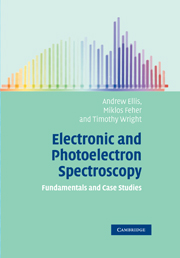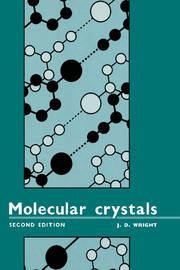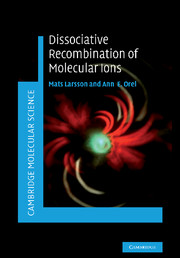Electronic and Photoelectron Spectroscopy
Electronic and photoelectron spectroscopy can provide extraordinarily detailed information on the properties of molecules and are in widespread use in the physical and chemical sciences. Applications extend beyond spectroscopy into important areas such as chemical dynamics, kinetics and atmospheric chemistry. This book aims to provide the reader with a firm grounding of the basic principles and experimental techniques employed. The extensive use of case studies effectively illustrates how spectra are assigned and how information can be extracted, communicating the matter in a compelling and instructive manner. Topics covered include laser-induced fluorescence, resonance-enhanced multiphoton ionization, cavity ringdown and ZEKE spectroscopy. The volume is for advanced undergraduate and graduate students taking courses in spectroscopy and will also be useful to anyone encountering electronic and/or photoelectron spectroscopy during their research.
- Describes the theory and experimental techniques behind electronic and photoelectron spectroscopy
- Extensive use of case studies allows the reader to follow the reasoning employed in the assignment of molecular spectra and how the information is extracted from the spectrum
- Describes spectroscopic techniques
Reviews & endorsements
"For a scientist with a solid math and chemistry background, this is an excellent book on spectroscopy. Highly recommended." CHOICE
"This text bridges the gap between the basics and cutting edge applications of electronic spectroscopy at a level appropriate for upper-level undergraduates and junior graduate students...clearly written and easily digested." - Journal of the American Chemistry Society, Caroline Chick Jarrold, Indiana University
Product details
April 2011Paperback
9780521520638
302 pages
244 × 170 × 16 mm
0.49kg
Available
Table of Contents
- Preface
- List of journal abbreviations
- Part I. Foundations of Electronic and Photoelectron Spectroscopy:
- 1 Introduction
- 2. Electronic structure
- 3. Angular momentum in spectroscopy
- 4. Classification of electronic states
- 5. Molecular vibrations
- 6. Molecular rotations
- 7. Transition probabilities
- Part II. Experimental Techniques:
- 8. The sample
- 9. Broadening of spectroscopic lines
- 10. Lasers
- 11. Optical spectroscopy
- 12. Photoelectron spectroscopy
- Part III. Case Studies:
- 13. Ultraviolet photoelectron spectrum of CO
- 14. Photoelectron spectra of CO2, OCS, and CS2 in a molecular beam
- 15. Photoelectron spectrum of NO2−
- 16. Laser-induced fluorescence spectroscopy of C3: rotational structure in the 300 nm system
- 17. Photoionization spectrum of diphenylamine: an unusual illustration of the Franck–Condon principle
- 18. Vibrational structure in the electronic spectrum of 1,4-benzodioxan: assignment of low frequency modes
- 19. Vibrationally resolved ultraviolet spectroscopy of propynal
- 20. Rotationally resolved laser excitation spectrum of propynal
- 21. ZEKE spectroscopy of Al(H2O) and Al(D2O)
- 22. Rotationally resolved electronic spectroscopy of the NO free radical
- 23. Vibrationally resolved spectroscopy of Mg+–rare gas complexes
- 24. Rotationally resolved spectroscopy of Mg+–rare gas complexes
- 25. Vibronic coupling in benzene
- 26. REMPI spectroscopy of chlorobenzene
- 27. Spectroscopy of the chlorobenzene cation
- 28. Cavity ringdown spectroscopy of the a1∆←X3∑g− transition in O2
- Appendices
- Index.





